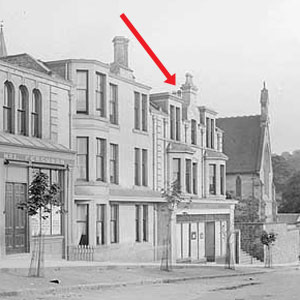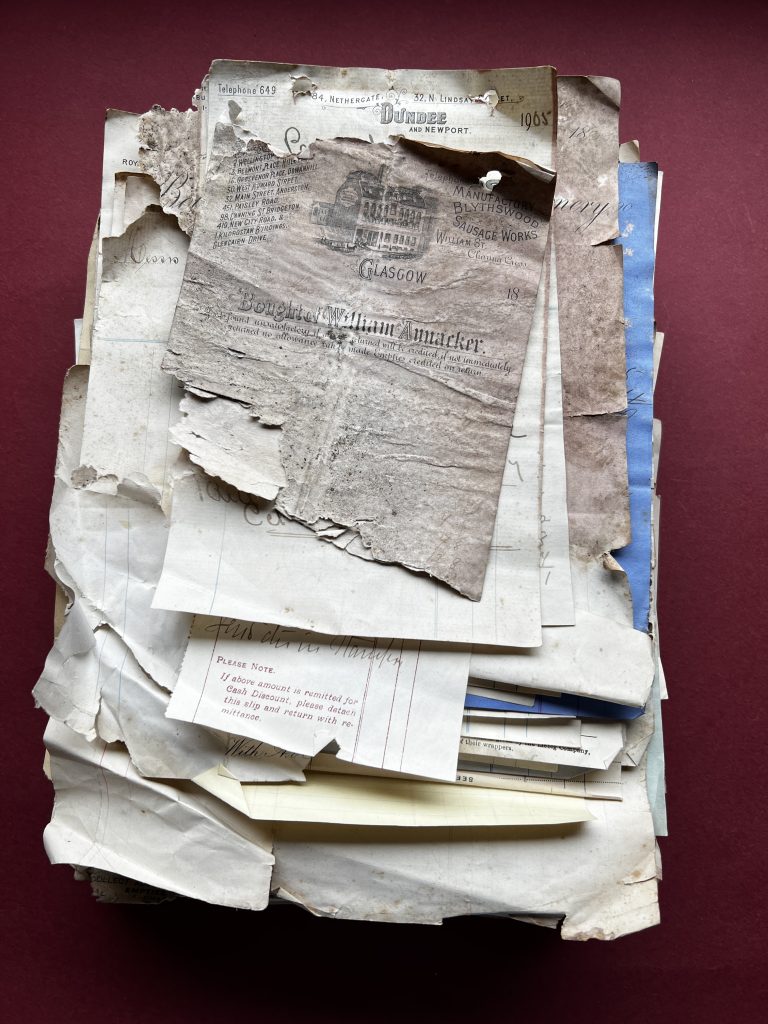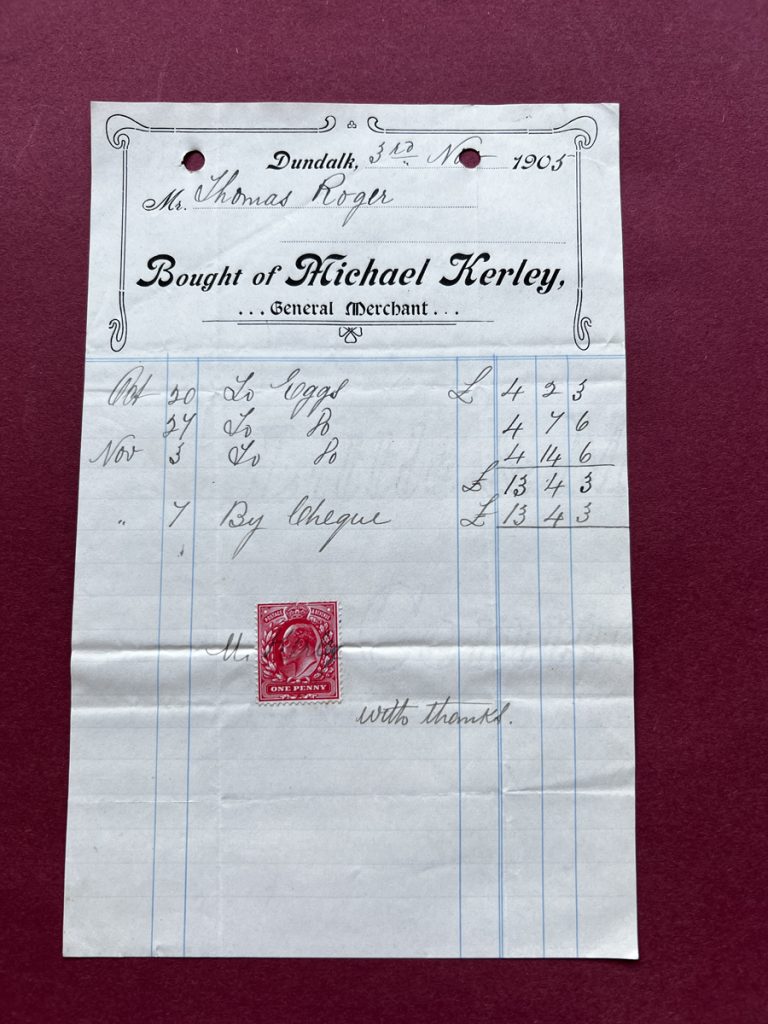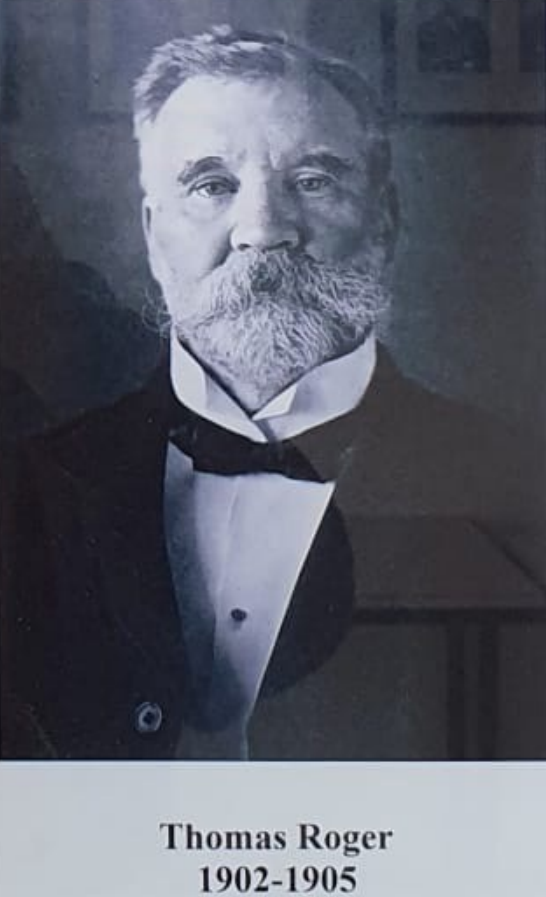
The shop at the foot of the High Street (no. 16) has always been a grocer’s. At present it is a Spar store, prior to that it was A & S Brown’s, Sinclair’s and Johnston’s Stores. But it started its days as Thomas Roger’s high class grocery.
Thomas started in the grocery trade as an assistant in Dundee before coming to Newport in about 1873 and opening his own shop at 40 High Street (currently NewPaws on Tay). In 1890 he feued the vacant plot of ground at the foot of the street and by 1892 the shop on the ground floor and 2 flats above had been built.1
Thomas was not the only grocer in the town – his opposition included J Anderson, P D Wighton, and Andrew Malcolm / Charles Barrie. Each one tried to keep one step ahead of the rivals.
Being an Edwardian high class grocer to fit in with Newport’s prestige meant sourcing the best supplies from around the country. Usually you have to rely on adverts in the local papers or promotional material to get a flavour of the trade.
This advert is from a 1908 directory for Newport.2
Notice – no fewer than 6 standard blends of tea, as well as a special China tea.


However, a deep clean by the Browns in the 1990s uncovered a bundle of old papers from Thomas’s time in the shop. They consisted of a group of 120 suppliers’ invoices to Thomas Roger for part of 1902-3 and another bundle, still tied with its original string, of an almost complete collection of 470 invoices for the second half of 1905. (It is possible that an unknown small number of invoices from this bundle beginning with ‘A’ had disintegrated over the years.)
The invoices have all been photographed and made available here. (Because of the small size of the photos on this blog, you are better to follow the links to the main site to see the invoices clearly.)
When looking through them, I was struck by the number of individual firms that are being dealt with. There were certainly wholesale grocery suppliers (e.g. Carswell, Laskie, etc), but a large number of household names were supplying goods individually. There are invoices from Cadbury’s, McVitie & Price, Nestles, Reckitt and Sharwood, and more. At the other end of the scale, Mr Maxwell in Dundee is supplying scones (and only scones) every week.

Coffee and tea came from Edinburgh, methylated spirits from Liverpool, eggs from Kirriemuir and Dundalk in Ireland (they must have been some eggs!), bacon – as advertised – from Ayrshire, Belfast and Wiltshire, suet from Manchester, and so on. There were also the empties to deal with – biscuit boxes to be returned and bottles to go back. Shipping and carriage charges had to be dealt with, both on the supplied goods (frequently ‘carriage free’) and on the empties. Pears soap from London was sent by steamer to Dundee. The bacon from Belfast was insured for its journey. There are bills from B L Nairn, Dundee, for shipping charges, and from the Caledonian Railway for carriage.
There were local suppliers of seasonal produce. St Fort Gardens provided fruit & vegetables, even grapes. Redcurrants came from Charles Moon in Tayport. Mr Fearn at Forgan Smithy shod the horse every few months, and Mr Rhind at Woodhaven Farm supplied potatoes.
The big disappointment with so many of these invoices is that they are itemised as ‘To Goods’ or ‘To account rendered’ when you really want to know what was being supplied. Just what were T & S Plum in Copenhagen supplying direct?
The shop provided a delivery service whereby customers could leave a note for an order, it would be made up in the shop and delivered by horse and van later. Of course, sometimes Roger’s were asked for an item which was out of stock. To avoid disappointment, the missing item was ‘borrowed’ from one of the opposition shops and was repaid later. All of this unknown to the customer. As an example, there is an invoice from James Anderson in Robertson Place showing that Roger’s was supplied with a packet of Force.3 The give-away is that the invoice isn’t priced and the goods were returned as soon as Roger’s had them in stock again.4

Thomas Roger was a member of Newport Town Council from 1892-95 and 1896-1905, serving as Provost 1902 – 1905.5
There are a few household bills included – for example Thomas’s annual subscription to the Newport Bowling Club, some chemist’s bills, and for coal. Some are addressed to him at his home ‘Snowdon Bank’, and some are even addressed to Provost Roger.
These may be just crumbling pieces of paper but they can still be explored and provide a glimpse that we would not otherwise have into the world of commerce on Newport’s Edwardian High Street.
You never know what will turn up next.
Notes & Sources
- Architects: Durward Brown & A J Gordon, London – the Newport connection is that Durward Brown was the second son of James Brown, the builder.
- The Tayside Annual and Directory for Newport, Wormit and Tayport, McFarlane (ed.), published Dec 1907, held by Dundee Central Library
- Force was a ready-cooked cereal (there is an advert in the Liverpool Evening Express, 12 Aug 1903).
- When I did this for Beatt & Tait’s in the 1960s, I took items with the same retail price to barter with Johnston’s Stores for the missing goods and no record was needed. I am sure that one tin of Ovaltine went up and down the High Street many times!
- Photo: Provost Roger, from Newport History Group
